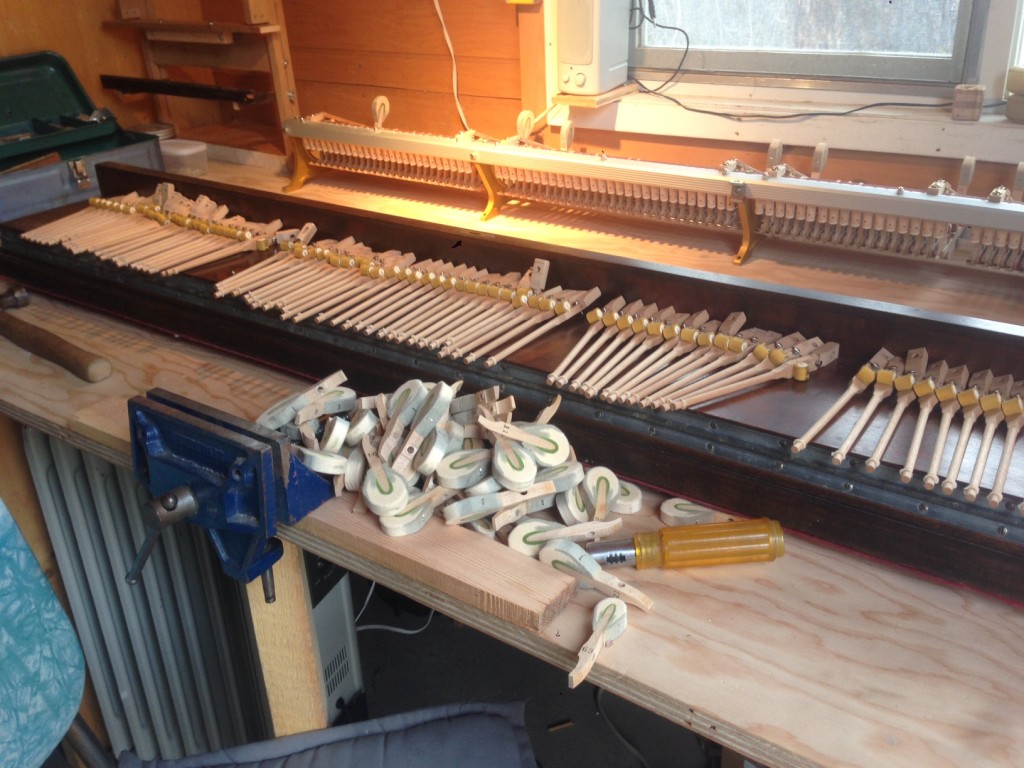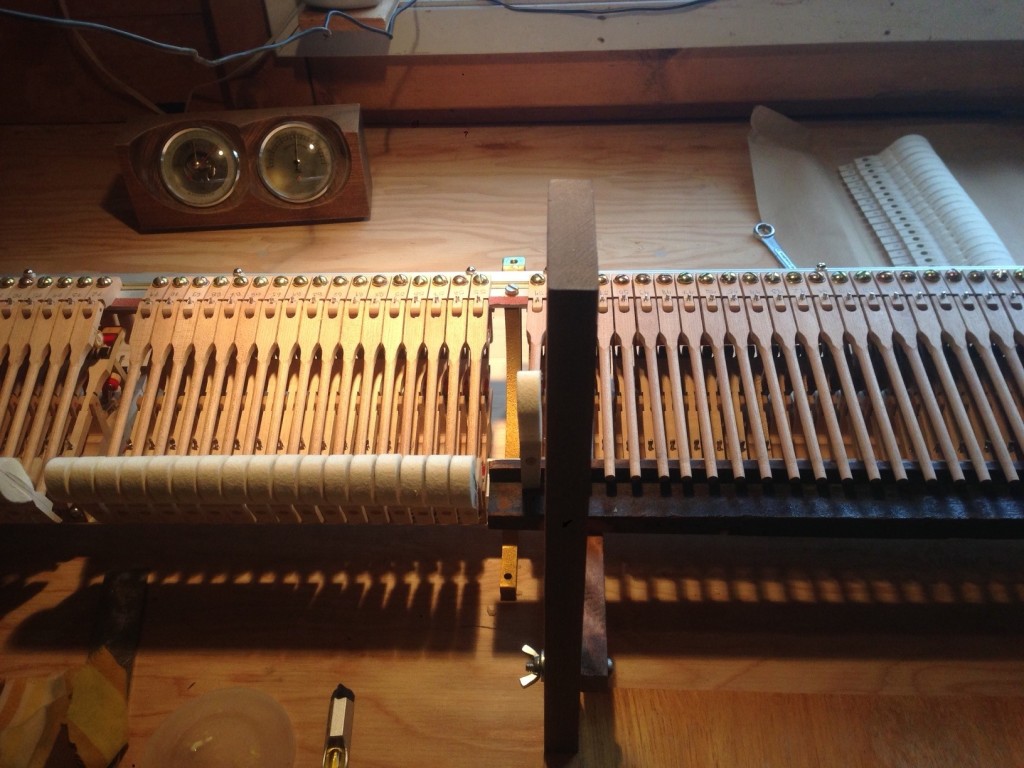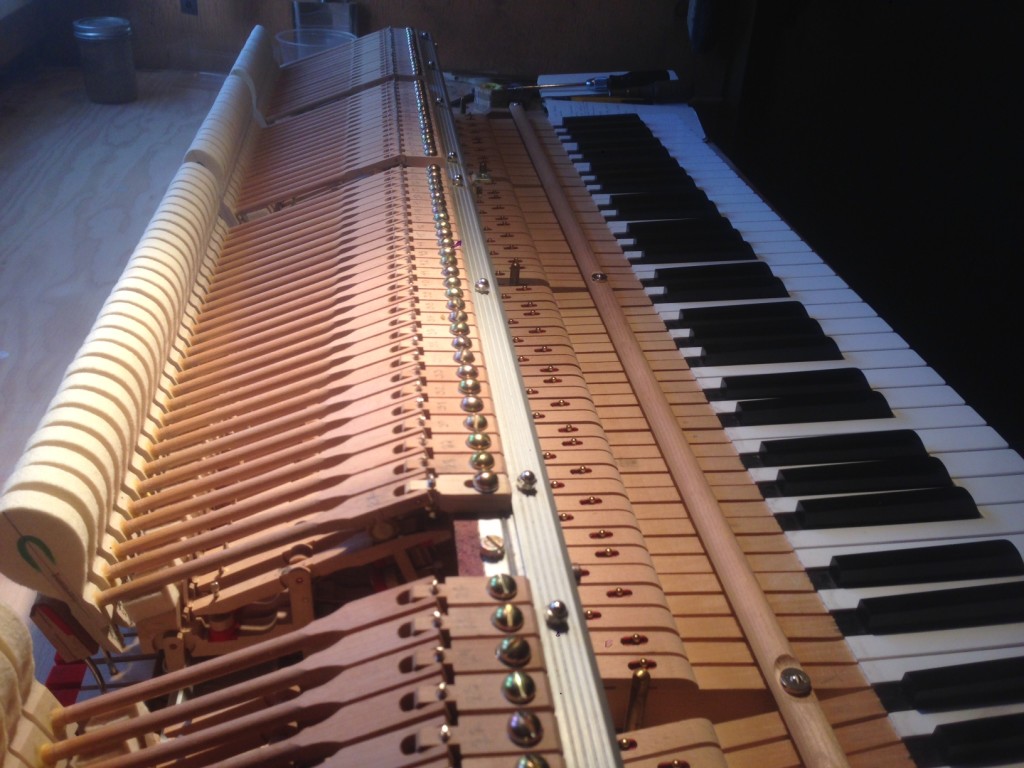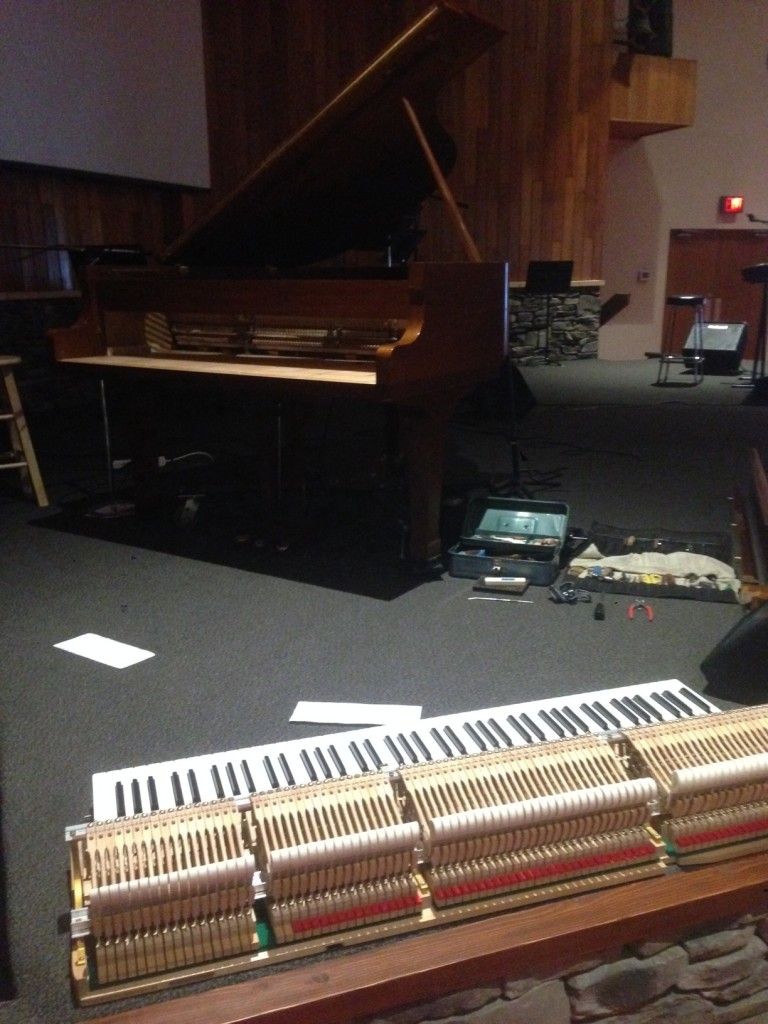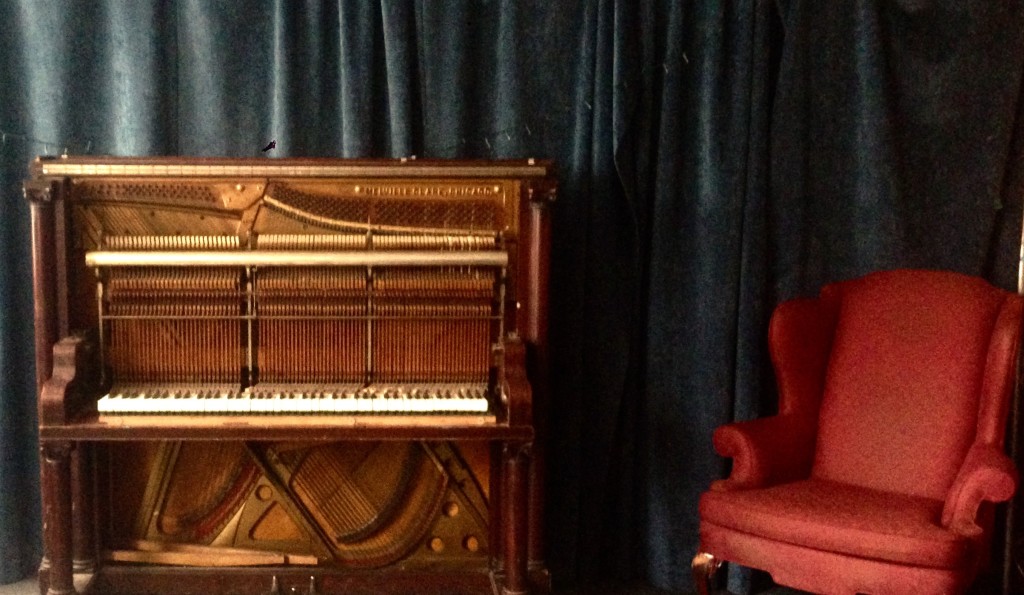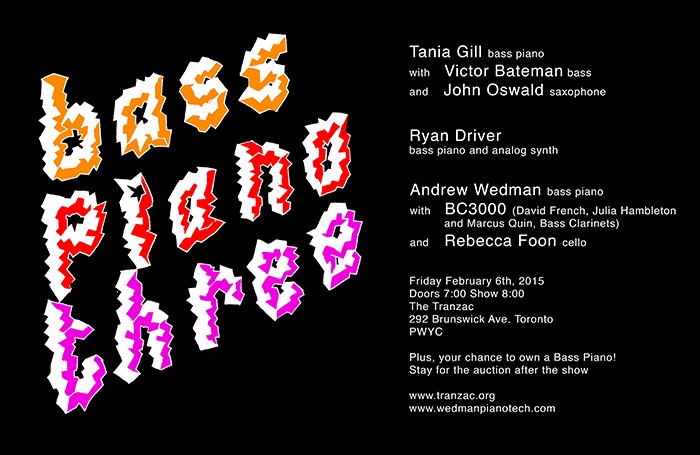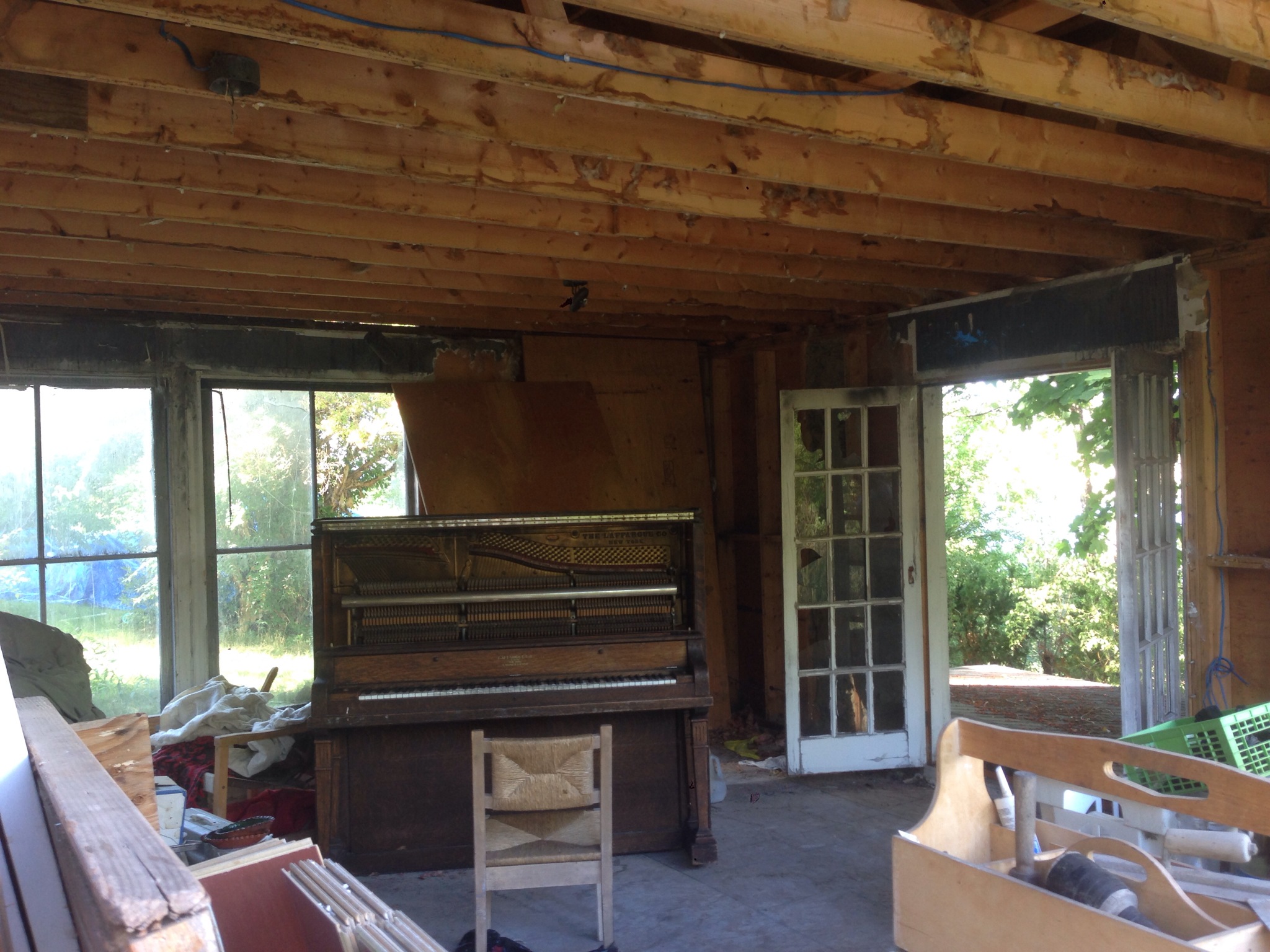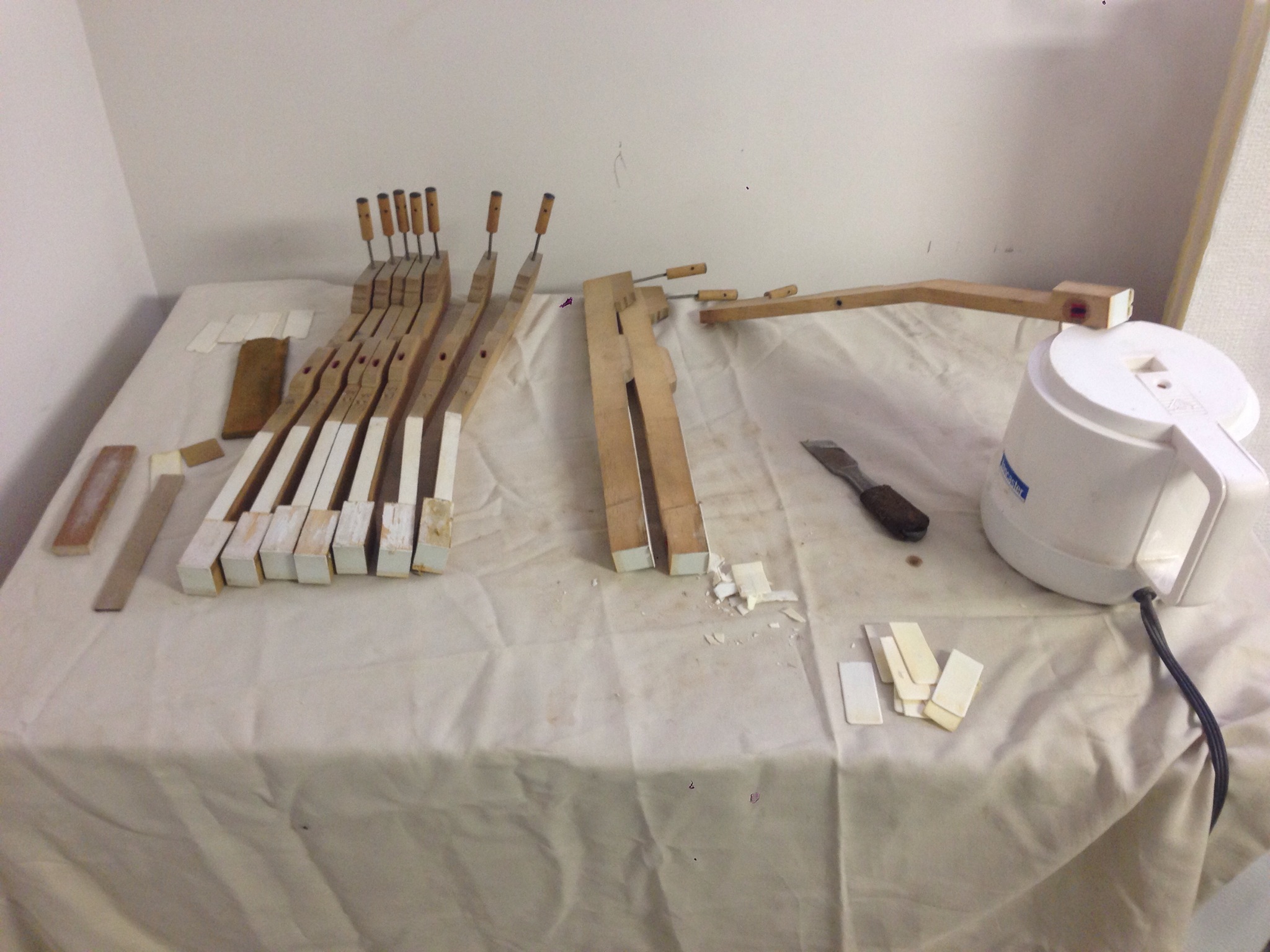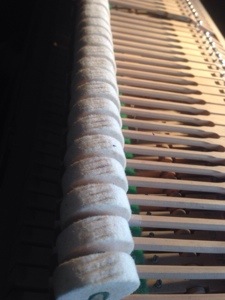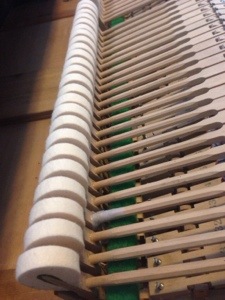My old blog posts will remain on my website but my new posts will be on Instagram:
New Hammers for a Yamaha Grand
I recently did some work on the Yamaha Grand at Penticton Alliance Church. I removed the action (the mechanical unit inside the piano that includes the keys and hammers) and brought it to my shop. I removed all of the old hammers, installed a new set of hammers and did a full regulation (adjusting all of the moving parts so they are operating properly). Old hammers develop a flat hard surface where it strikes the string creating a harsh bright tone. New hammers are softer and have a full dynamic range. Here are a few photos from the process.
Bass Piano III: Toronto
Bass Piano III at the Tranzac was a wonderful show. I was honoured to have such talented musicians play my strange creation and perform with me.
I have created a Bandcamp album from the live recording of Ryan’s set: Bass Piano III: Ryan Driver
Tania Gill’s set was recorded as well and will be uploaded soon.
Coming Soon: Bass Piano III
I will be joined by BC3000 (a bass clarinet trio with Julia Hambleton, David French and Marcus Quin) and Montreal cellist Rebecca Foon (Constellation Records). This ensemble will be performing works by Toronto composer John Mark Sherlock. Tania Gill will be doing an improv Bass Piano set with John Oswald on saxophone and Victor Bateman on bass. Ryan Driver will be doing a solo set on Bass Piano and analog synth.
The Bass Piano is a piano that has been tuned down a full octave to A220. I developed the Bass Piano through my experimentations with various altered tunings. The result is reduced tension in the strings and a unique tonal quality similar to bells or steel drums. With slightly unstable tuning and long sustains, strange and wonderful anomalies occur within its harmonics. As these extreme tunings can be difficult for pianos to adjust to, I detune old pianos, more and more of which are headed to the dump, repurposing these instruments so that they can be playable again.
The Bass Piano was debuted in Berlin in January 2013 with performances by John Kameel Farah and myself. Bass Piano II was presented later that year by Wavelength in Toronto with performances by Ryan Driver and Marilyn Learner.
Bass Piano III is an old piano from the Tranzac collection that was slated for retirement. This show will see this piano reinvented and an auction will be held to save it from going to the landfill.
poster by breeree
Piano Tinkering on TV
Shaw Television did a little spot about me working on one of the pianos at the Penticton Academy of Music. Unfortunate hairdo aside, it turned out quite well.
The Piano: Inside Out
An exploratory workshop about the piano led by certified piano technician Andrew Wedman
Date: Saturday October 25th, 2014, 10:00 – 11:30 AM
Location: Penticton Academy of Music at Leir House 220 Manor Park Ave. Penticton
Price: $20
To register contact the Penticton Academy of Music at 250.493.7977 www.pentictonacademyofmusic.ca
Many pianists don’t get a chance to explore “under the hood” of their piano. This workshop is an opportunity to learn more about the inner workings of this fascinating instrument.
We will explore how the piano works through a guided tour of a disassembled instrument, look at how the piano has evolved over time, and cover the best ways to care for your piano inside and out to ensure its best sound and long-life.
The class will also cover tuning to answer questions like, “How can I tell if my piano is out of tune?” and, “Why is the piano tuned differently than the tuning of other instruments?”
Whether you are just curious about the piano, or are an advanced player who wants a more in depth understanding about their instrument, this class will be pretty interesting. Questions and discussions usually ensue.
For more information about the class contact:
Andrew Wedman
250-460-1586
andrew@wedmanpianotech.com
Piano Survives Fire
I assessed this piano in Osoyoos and was surprised to find that it was structurally in good shape. The house that it was in had burned down a few years ago and since then has only been partially rebuilt. So far it has three walls and a roof. I thought the wood components in the piano would be destroyed but the bridges, sound board and pin lock are in great shape!
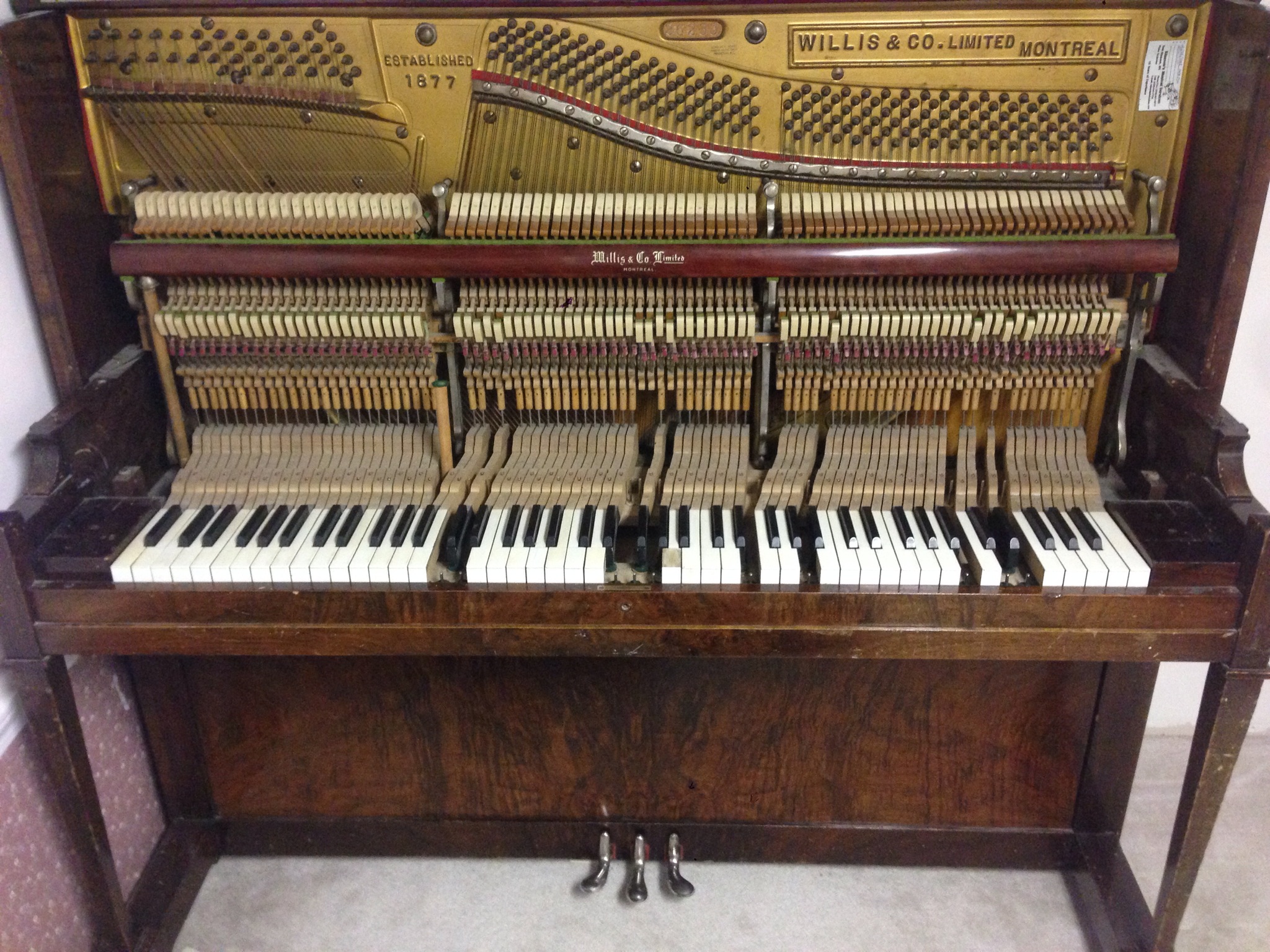
Keeping the Old Pianos Running

1870 Steinway Square Grand
This is a Steinway square grand from 1870, a super rare find in the Okanagan! In the 1800s, Steinway square grands were designed to be tuned at A435, so the owner and I decided to tune it like that, a lower pitch than pianos are usually tuned today (A440 which is International Standard Pitch).
In the 1800’s piano innovation was at it’s height. Piano makers were continuously trying to create more volume, wider range, cheaper instruments, different shapes, more responsive actions, the sostenuto pedal… the list goes on. Square grands were very popular in the Victorian era, then, In the late 1800’s the upright piano started to take over, they were smaller and more practical for the home. Piano manufacturers stopped building square grands around 1890.
Concert pitch or International Standard Pitch was going through an evolution during the same period. Throughout the history of western music, concert pitch has changing wildly. It’s a bit of a mental leap, because we think of tuning as we know it today as normal, but concert pitch has been rising steadily – from about A set at 377 Hz in the Middle Ages, to A set at 440 Hz at present, which is about two and a half semi tones higher. This increase in pitch was done as an attempt to create a brighter sound. In string instruments a tighter string (and therefore a higher pitch) actually creates larger amplitudes in the harmonics as well.
The piano I tuned here was going to be featured in an early music recital in which the other instruments were also tuning to a lower pitch appropriate to the era.
The history of tuning in western music might be a super piano nerd thing, but I find it pretty interesting. If you want, here is a little essay I found on the subject: A Brief History of the Establishment of International Standard Pitch A=440 Hertz by Lynn Cavanagh
Hammer Carding
Here is a before and after of a hammer carding job I did recently. Hammer carding is essentially reshaping old worn out hammers to give them a nice soft curved striking point again. After a lot of use hammers will develop a flat hard surface that is hitting the string resulting in a bright harsh tone.

